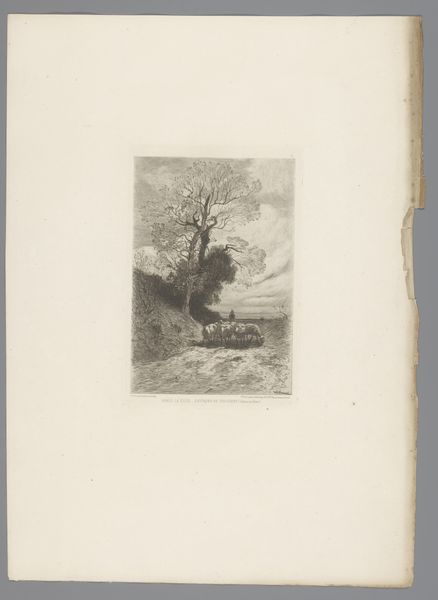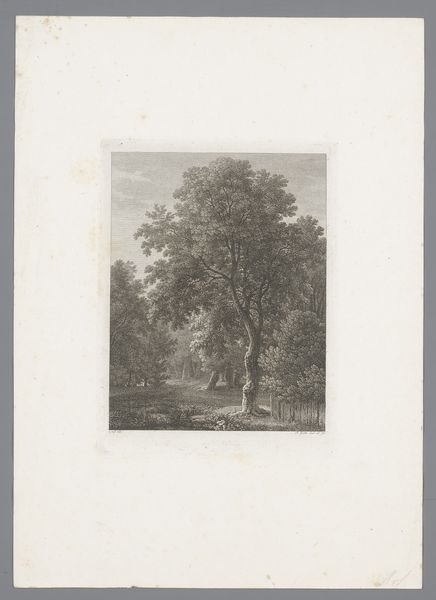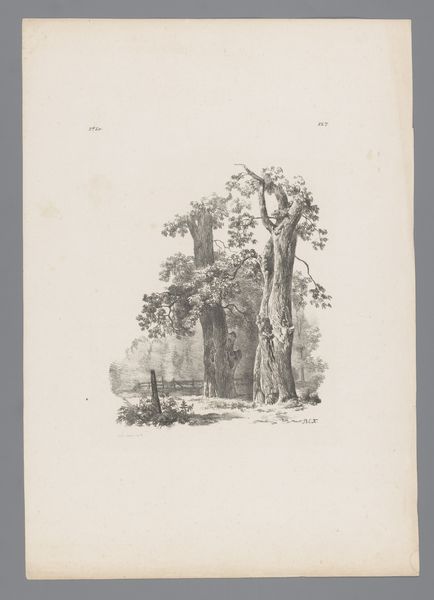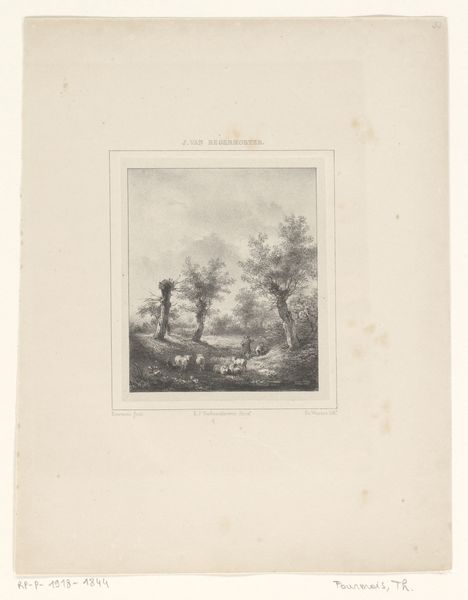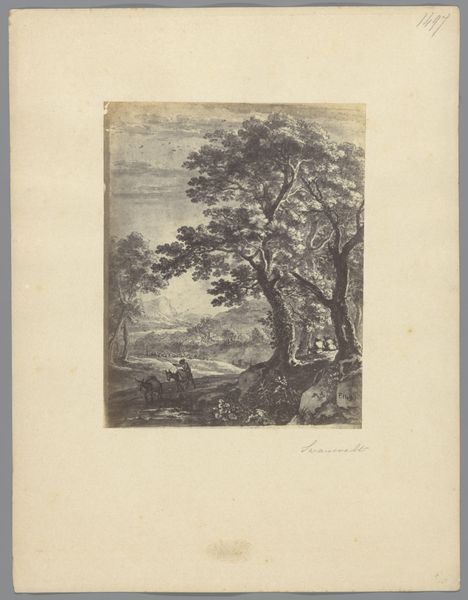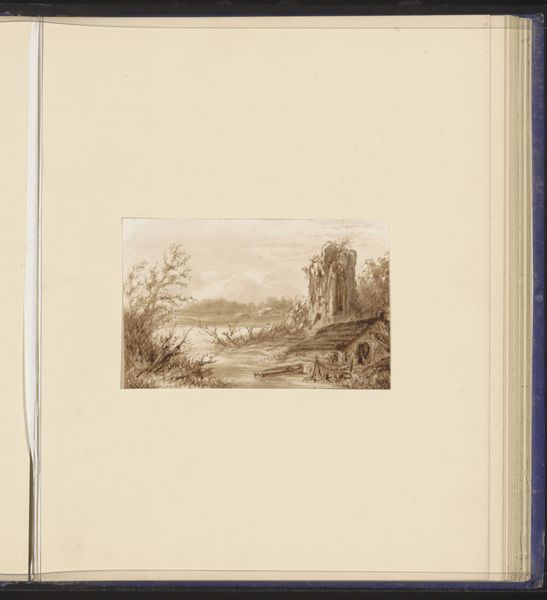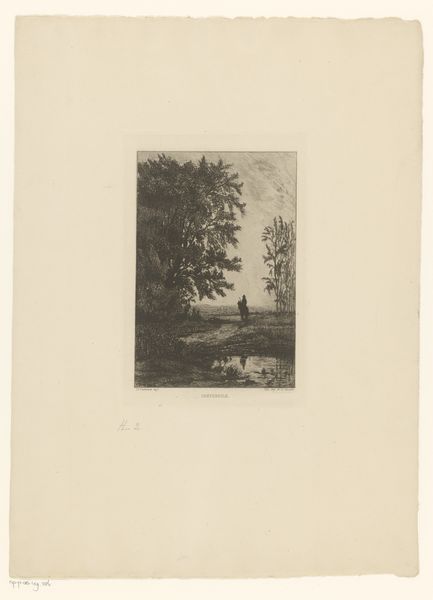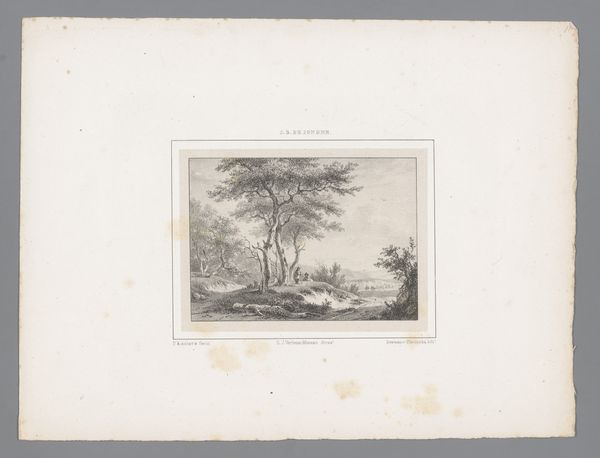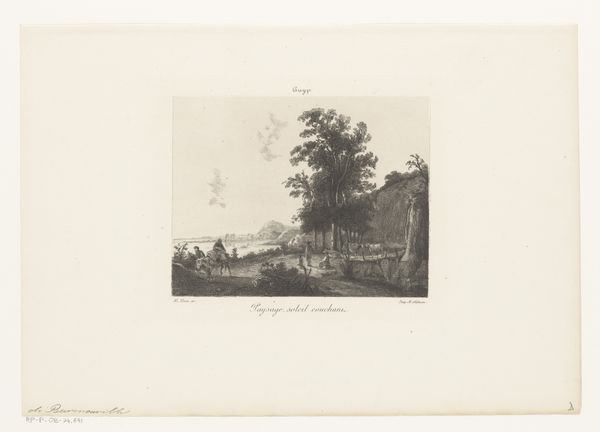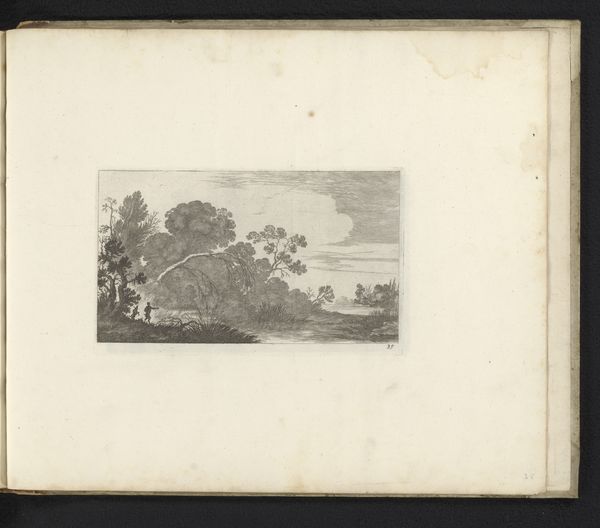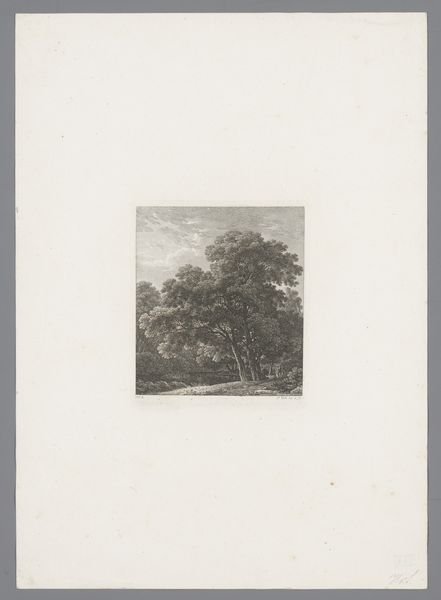
print, paper, engraving
# print
#
landscape
#
paper
#
romanticism
#
genre-painting
#
engraving
#
realism
Dimensions: height 264 mm, width 205 mm
Copyright: Rijks Museum: Open Domain
Editor: This engraving, “Herderin drijft haar kudde uit een bos,” from 1829 by Paulus Lauters, feels so calm, almost dreamlike. The dark trees contrast so strongly with the open pasture. What symbols or meanings do you see emerging from this pastoral scene? Curator: It's fascinating how these seemingly simple genre scenes resonate so deeply, isn’t it? Notice how the shepherdess leads the animals, but they also seem guided by an unseen path—a cultural memory, perhaps of an idealized, simpler time. Does the movement of the herd exiting the dark woods into the light signify an awakening, a search for clarity? Editor: That’s interesting. I hadn’t thought about it that way. Is this a common symbol in Romantic landscapes, this journey from darkness to light? Curator: Quite often, yes. But look closely—Lauters adds complexity. The light is soft, diffused. Is it true enlightenment, or merely a gentler shade of ambiguity? And consider the trees themselves, looming large. They act as guardians of secrets, of older knowledge. They remind us that nature holds stories, wisdom passed down through generations. Do you sense this feeling in the engraving as well? Editor: I do, now that you mention it. It’s almost like the landscape itself is a character, holding its breath, waiting. It does give the whole piece a symbolic layer I hadn’t picked up on initially. It shows the tension of realism clashing with a feeling. Curator: Indeed. What began as seemingly realistic is charged with greater symbolism. Editor: This piece speaks much louder than when I first looked at it. Thank you for sharing such intriguing insights!
Comments
No comments
Be the first to comment and join the conversation on the ultimate creative platform.

